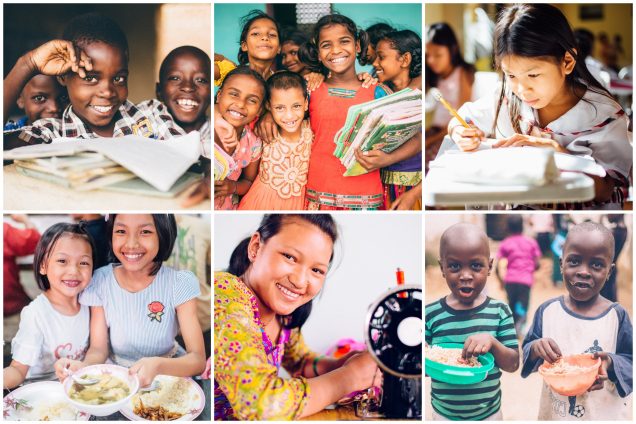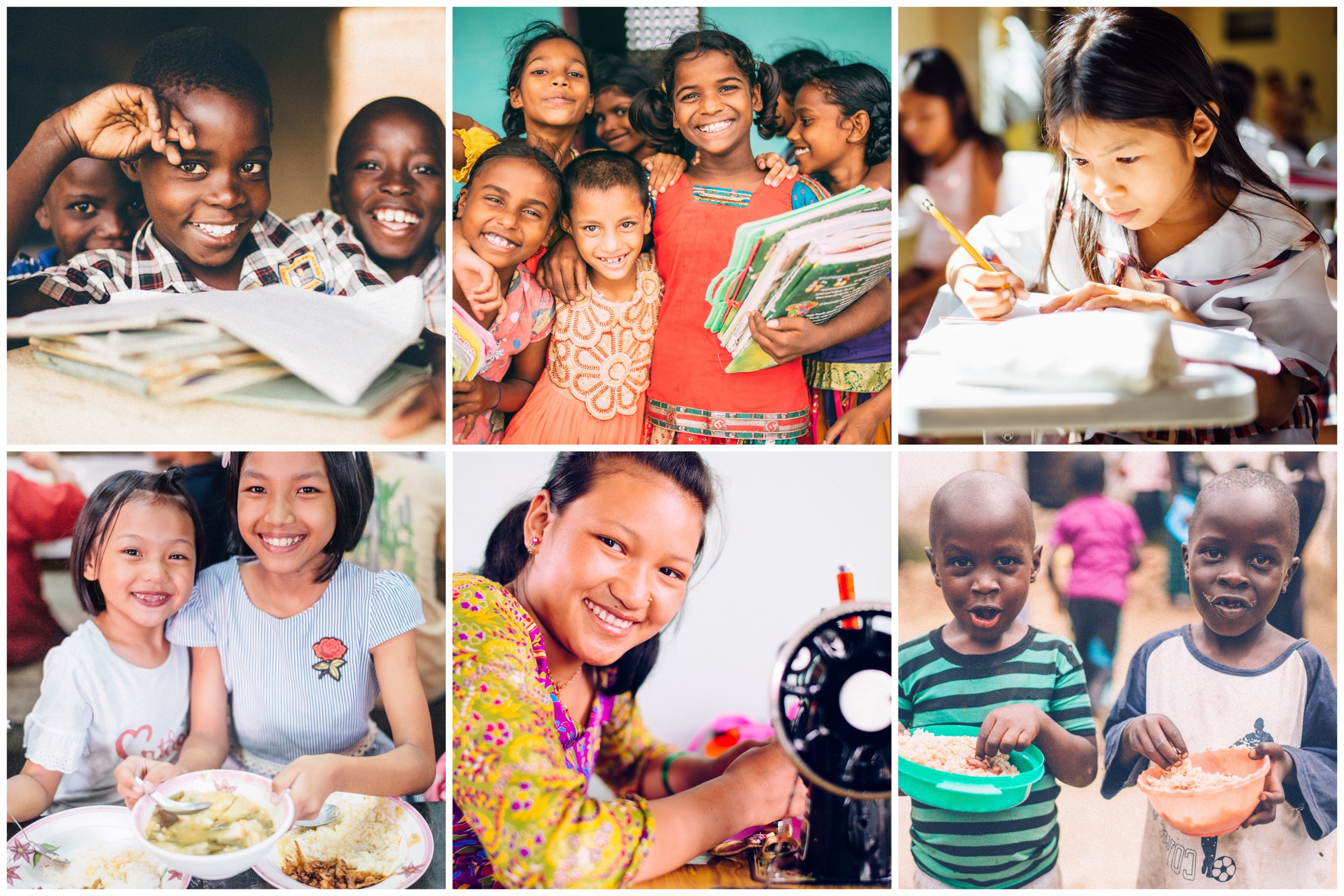Photo: Thanks to your support, a look back at our history reveals restored lives and hope among the thousands of children we’ve served.
Today we want to take a walk through the history of Peace Gospel to look at what we’ve done together, your donation appeal dollars at work, to transform the lives of our orphans, trafficking survivors, and to enable our native teams to make great strides in sustainability through our various farmland enterprise projects and small business ventures. Peace Gospel was birthed 25 years ago with a simple idea: to empower locally-led teams to stretch charitable giving as far as possible for long-lasting results among society’s most vulnerable children. Thanks to your generous support, our dream has been realized during the history of our organization.
By way of your support, with the goal of sharing both the spiritual and physical Gospel with society’s most vulnerable, we have:
- Rescued and rehabilitated 1,603 orphan children through our residential orphan care programs in 5 countries.
- Aided 3,148 at-risk children through our education programs in 4 countries, most of which would never have had a chance at a basic education without your support.
- Restored 166 human trafficking survivors at our ‘She Has Hope’ rehabilitation homes in Nepal and Uganda, and a further 483 child labor trafficking survivors at our orphan homes in India.
- Harvested 232 tons of produce from our farmland enterprise projects in 5 countries.
This overview of how many lives we have touched in 25 years, and the success of our agricultural pursuits, is very encouraging, but we also want to take this opportunity to give you a brief history of all 7 of our Peace Gospel program sites.
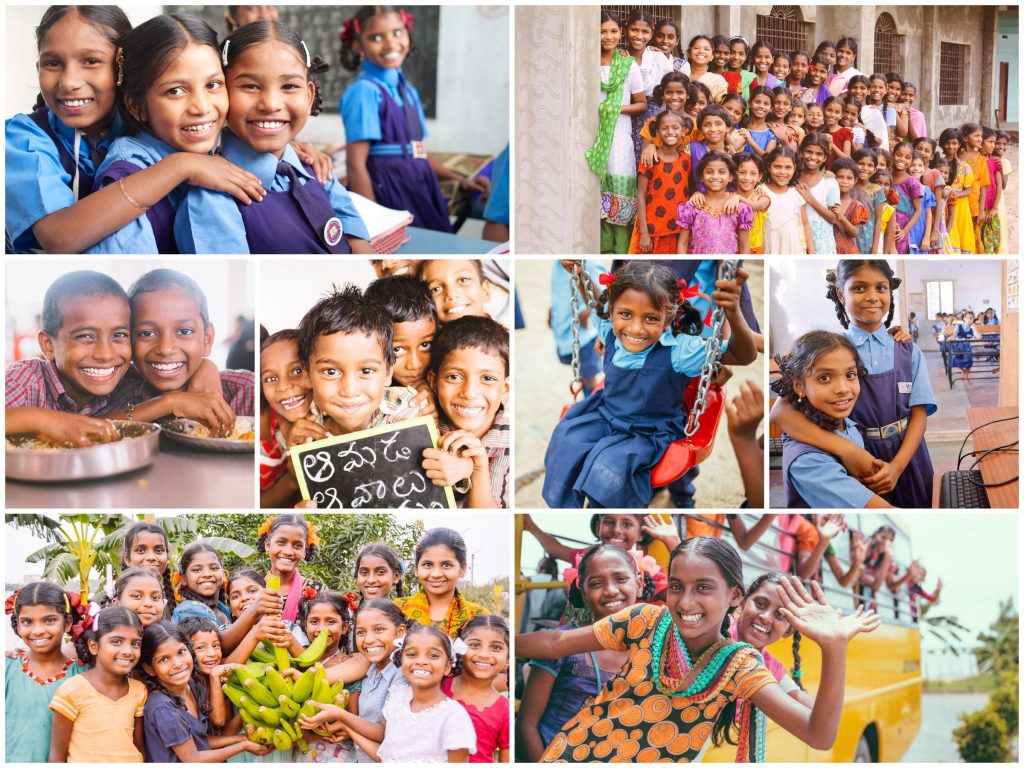
INDIA
We first partnered with our India native team in 1993 when we started conducting relief outreach to children in an urban slum colony. As a result of encountering destitute orphans sometimes enslaved and usually engaged in child labor with no chance at an education much less adequate nutrition, we felt called to launch our Boys Home in 1997 (where we have employed a cumulative 18 staff members) and our Girls Home in 1998 (where we have employed 23 staff members).
Since then, we have provided complete residential care to 329 boys and 478 girls. India has more orphans than any other nation: an estimated 35 million children. Thus, we are extremely grateful for your support which has enabled us to keep our orphan homes in South India in operation — they are safe harbors from the dangers of child labor and trafficking situations, offering our orphans hope through nutrition, education, and a loving, nurturing environment centered on the Biblical principles of God’s love.
In 2007-2008, we launched our on-campus primary school in India, which offers a complete accredited education. When we first opened the school, we had approximately 22 children from the orphan home enrolled and 3 classrooms. Thanks to your immense generosity we have grown substantially during the past decade — we are now utilizing 10 classrooms as well as a computer room where the children study their native Telugu and Hindi languages, English, math, science, and social studies.
In the history of our primary school we have had 169 boys and 210 girls enrolled, we have employed 19 teachers, and 110 boys and 145 girls have graduated. Our students have always been excited to be in the classroom where their education equips their minds with valuable knowledge to ensure a fruitful livelihood in their future.
To try and meet the great need of children who live in the Indian slums with no opportunity to receive an education, let alone any normal sense of nourishment or hygiene, we launched our Children’s Hope Center in 2010, located in one of the largest slum areas of India, in the city of Hyderabad. While our Hope Center was in operation before closing due to local political tensions, we were able to enroll 136 at-risk children and employ 13 staff members. This program provided a well-rounded education including a computer lab, fresh-cooked meals, hygiene supplies, and medical care for the students enrolled.
Our farmland enterprise in India started with a water buffalo dairy farm which we launched in 2005, producing 18,800 liters of buffalo milk while in operation. We also started an orange orchard in 2009, we acquired a 14-acre farmland in 2012, and we launched a rooftop box garden project in 2014. During the history of these agricultural projects, we have produced the following:
The entirety of our farmland enterprise has empowered our native team with more funding from surplus crops sold at market, a stronger sense of ownership in their work, and delicious and organic ingredients for our children’s and staff’s meals.
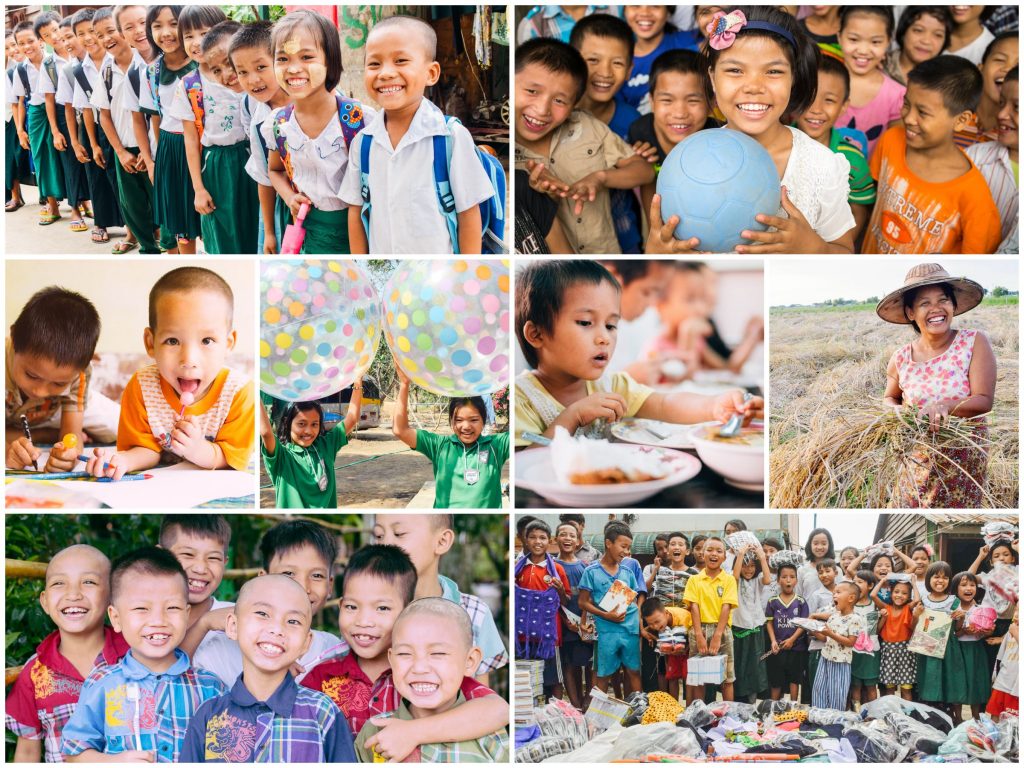
MYANMAR
We first partnered with our Myanmar native team in 2008 when we launched our orphan care program, which over the years has grown to encompass 5 orphan homes where we have provided complete residential care to 165 orphans and employed 12 staff members. In 2010, we purchased our 14-acre rice farm, which during its history has yielded 82.6 tons of rice. We have always been very thankful for this good crop that has provided a key staple in the diets of our orphans and staff in our 5 orphan homes, a great blessing to their health.
A former farmland enterprise project in Myanmar was our piggery which we transformed from a backyard project to a commercial enterprise in 2009 — during its operation we raised 152 pigs and sold them at market, providing extra funding for our orphan care program. We currently also draw funding from a small-scale purified water bottling business which we launched in 2011 and thus far, we have produced 84,000 liters of purified water. Your faithful support has enabled us to offer hope and empowerment to the people of Myanmar in the midst of an otherwise hopeless and oppressive environment.
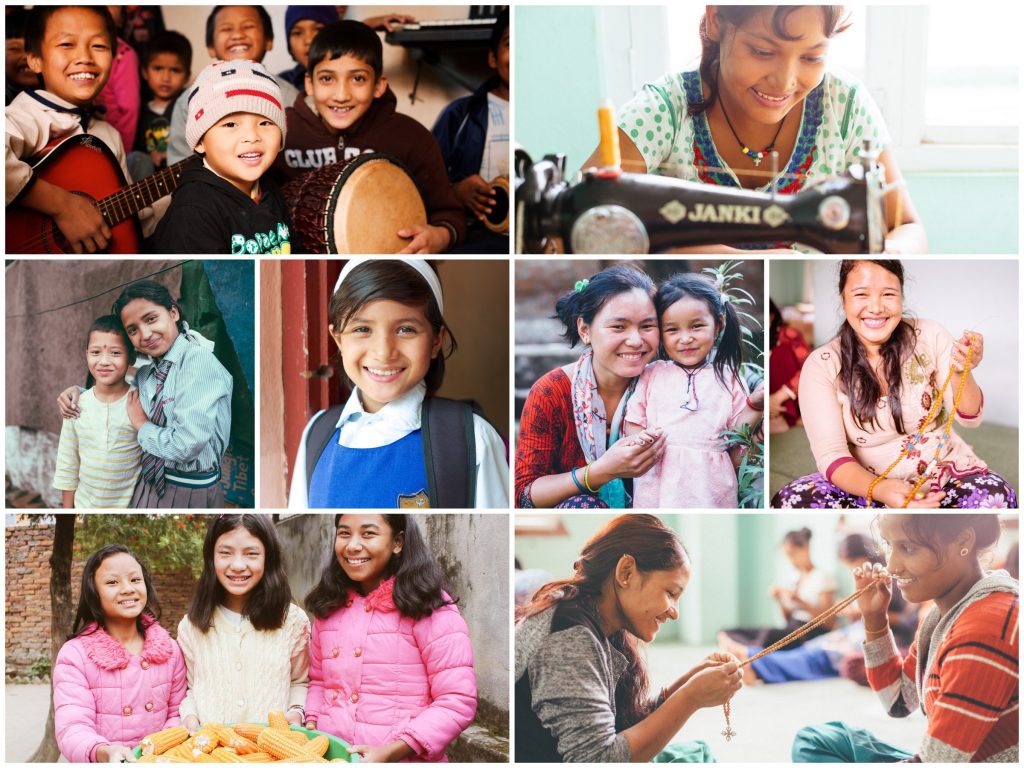
NEPAL
We first partnered with our Nepal native team in 2008, and we were able to launch our orphan home in 2009. Since then, we have provided holistic residential care to 28 orphans and employed 7 staff members. These children have always received a quality education, and their emotional, spiritual, nutritional, and medical needs have also been fulfilled, which would not have been possible if they had continued to live in their old villages in deplorable conditions. During our Nepal field director’s past travels in the 1990s and 2000s, he encountered many children who were malnourished and neglected due to the loss or disability of such children’s parents. We are immensely grateful that through these experiences, God had begun to plant the seeds in his heart to start an orphan home in the nation’s capital of Kathmandu, which has been a great success during these 9 years.
In 2014, we launched our Nepal Children’s Hope Center. With the help of 2 volunteers, we were able to enroll 46 at-risk children who lived in the slum colony where we operated the center. This after-school care program provided tutoring, daily nutrition support, and a safe place for the children to be after school, thus preparing them for a successful, hopeful future. Unfortunately, we had to close the center during some cuts in our budget in 2017, but we hope to relaunch the program someday soon when more support is gathered.
In 2012, we began our ‘She Has Hope’ rehabilitation home which has been home to Nepalese girls rescued from human trafficking situations. There they have received counseling and medical care, room & board, literacy classes, and become proficient in several craft-making, seamstress, and gardening skills through daily coursework offered by our full-time teachers. Their crafts are sold at SheHasHope.org to supplement the program’s funding. During the 6 years of this program, 160 girls have been rescued and lived at the home, 150 girls have graduated from our skill development program, and we have documented cases of 60 girls who have started their own tailoring businesses. Many more have gone on to find jobs related to the skills they acquired at the home.
As part of their skill development program at the Nepal rehabilitation home, the girls have cultivated a garden on the property, which was launched in 2014. Within these 4 years, the girls have harvested the following:
The girls’ gardening project has not only provided them with nutritious, organic ingredients for their meals, but it also has given them the knowledge of advanced gardening techniques. They have been able to leave the home with the ability to start their own gardens to provide for their nutritional needs.
In 2011, we purchased our farmland in Nepal — the profits have supplemented our in-country budget which includes operating our orphan home in Kathmandu. During the past 7 years, our native team has harvested the following on their humble 1-acre mountain farm:
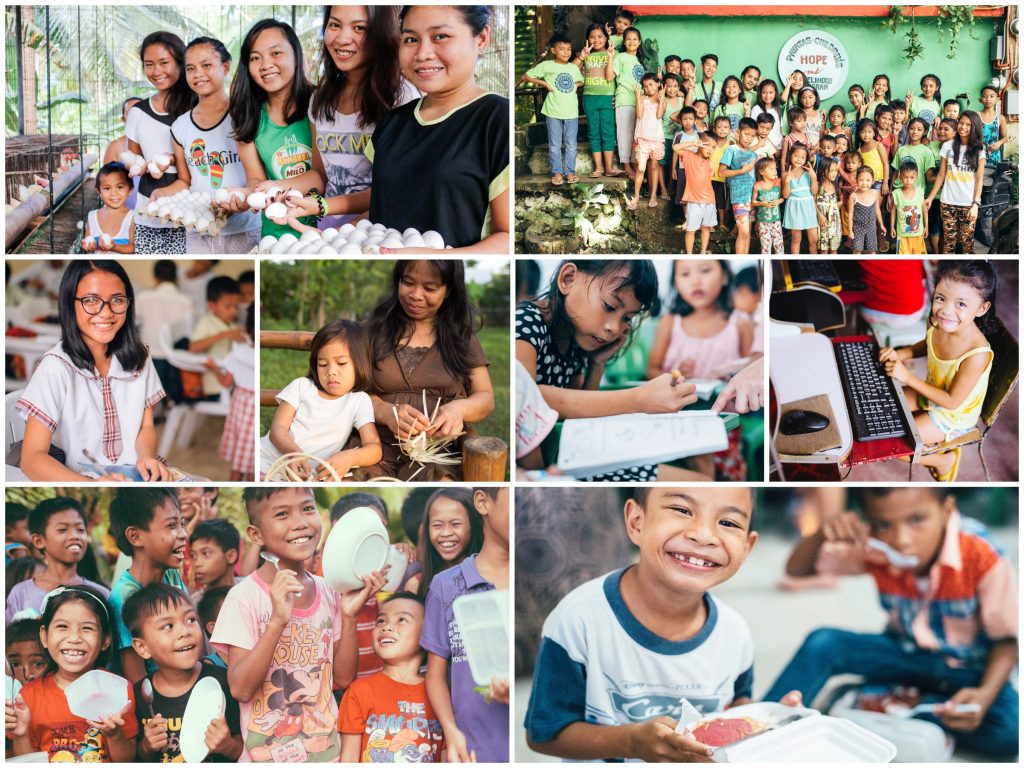
CEBU, PHILIPPINES
We first partnered with our Cebu, Philippines, native team in 2009, and we were able to launch our girls’ orphan home in 2011 where we have since provided complete residential care for 5 girls and employed 2 staff members. Through our weekend children’s outreach program, we encountered orphan girls who were victims of child labor or slavery situations. In response to this tragic realization, our native team has provided refuge for 5 girls since it launched.
In 2015, we launched our Children’s Hope Center on the island of Cebu and in the past 3 years, we have been able to enroll 30 children, employ 2 teachers, and enlist the help of 2 volunteers. Our Cebu Hope Center is modeled after our other Hope Centers — after-school care programs which have always strived to ensure that children stay successfully enrolled in school.
In 2011, we launched our Cebu hen house project where we have since raised 900 hens who have produced 614,880 eggs weighing approximately 38.4 tons. Our hen house is an integral part of our farmland enterprise as it has always provided a source of nutrition for the children and our native team and sustainability and funding for our programs. The quality and competitive price for the eggs has created a strong local demand for our eggs over the years, resulting in a daily waitlist for fresh eggs. Due to this high demand, all of the eggs are reserved by regular customers and no marketing has ever been needed to sell the eggs.
In 2014, we launched our Cebu fishery project which consists of two manmade pond structures. During the last 4 years, we have raised 1,433 lbs. of healthy fish. In 2016, we launched our piggery project and in the last 2 years, we have raised 39 pigs. In 2015, we launched our goat farm and in the last 3 years, we have raised 37 goats.
In 2000, our local team planted a coconut grove and after ten years the coconut trees matured and started to produce fruit — since 2010, we have harvested 11,015 coconuts weighing 17.6 tons. In 2013, we planted our banana grove and after two years the banana trees matured and started to produce fruit — since 2015 we have harvested 1,038 lbs. of bananas. Our entire farmland enterprise is very lucrative as profits generated from the various farmland projects, combined with your donations, have always allowed us to operate our girls’ orphan home and our Children’s Hope Center.
In summary, our Cebu farmland has yielded the following since 2010:
MANILA, PHILIPPINES
We first partnered with our Manila, Philippines, native team in 2012 and purchased land for a new facility for their Children’s Hope Center program in 2014. Our Manila team started up their Hope Center program in 2008 before we partnered with them, but after purchasing the land, they completed construction on the new facility in 2016. In the last decade, our Manila Hope Center has touched 347 children’s lives and enlisted the help of 35 volunteers including youth who benefited from the program when they were younger.
Through the Hope Center program, we have offered families of the slums an alternative to child labor. We have offered nutritious fresh-cooked meals, clean water, hygiene lessons, free hygiene supplies, games, “Vacation Bible School” activities, and classes on basic computer skills. The program has also offered these children educational support — providing everything they need to enroll in school, such as uniforms, book bags, and school supplies.
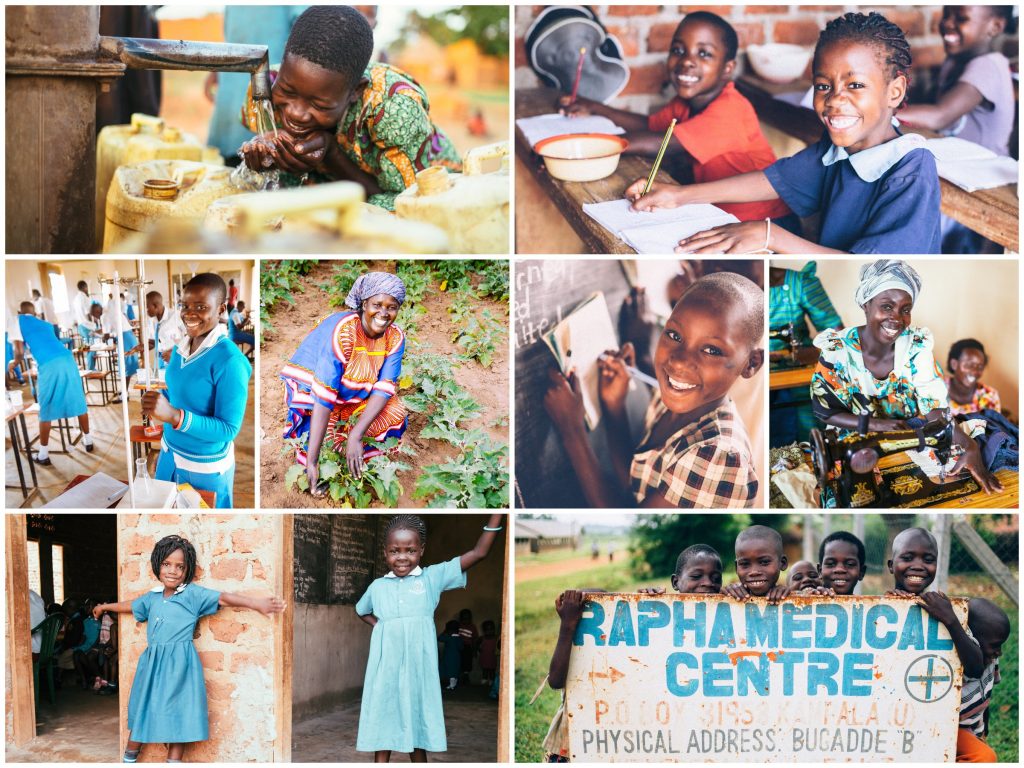
UGANDA – RURAL
We first partnered with our rural Uganda native team in 2009, and one of our first projects was to drill a clean water well that has served thousands in our high school and in the local community for nine years now. We were able to launch our rural primary school in 2012 where we have since enrolled 789 students and employed 39 teachers and 18 other staff members, the latter creating jobs for the Ugandan population.
Our native team officially began the high school at our main campus in 2007 where we have since enrolled 1015 students, and 696 of these students have graduated with a high school diploma. We have also employed over 80 teachers and 30 other staff members at the high school which is now a boarding school home to 373 students. Our local team has included orphan care as a key focus at the boarding school, and thus during the last 11 years, we have provided complete residential care for 598 impoverished orphans.
In 2012, we launched our on-campus Rapha Medical Clinic where we have treated over 500 students, treated 2,000 adults, employed 9 doctors, employed 20 nurses, and employed 12 other staff members.
In 2010, we launched our farmland enterprise in Uganda and during the last 8 years, our native team has harvested the following — we’re very proud of them for being innovative and resourceful in working hard to grow their own food:
KAMPALA, UGANDA
We partnered with our Kampala, Uganda, native team in 2011 when we launched our Children’s Hope Center School in the slums of that city. In the last 7 years, we have served 407 children and employed 22 teachers. Through our Hope Center school, we have also been able to serve fresh-cooked meals to over 2,000 children — that includes both our students and other children in the local slum colony where our school is located.
Thanks to your faithful support, our amazingly hard-working field director has been able to take the modest budget we have allocated for him and make it stretch into 3 meals a day for the students and local children. The meals consist of basic staples such as corn, potatoes, rice, and flour made from cassava root. Sugar is added to the cornmeal to make a sweet porridge for breakfast, salted rice and beans are offered for lunch, and potato soup or other potato dishes are offered for dinner before dismissing the children for the day.
In January of 2017, we started our second ‘She Has Hope’ trafficking rehabilitation home under our Kampala outreach team’s leadership. The humble home has since served six human trafficking survivors who learn craft-making skills, tailoring skills, and are provided with a safe space to recover, with nutrition and medical support. Women from our director’s church are involved in the care and support of the young women during their recovery.
HOW YOU CAN BEST HELP
We are currently seeking more monthly donors to help us further strengthen our programs — please consider filling a heart on our Monthly Sustainer’s “Heart Chart” today. The needs are extensive, but when we come together in a consistent way, we can make a lasting, life-changing difference in the lives of our children, our field directors and teachers, and the trafficking survivors.
Please also consider a special gift toward our year-end goal here. The year-end goal will help us replenish our emergency fund which is used for support of orphans and trafficking survivors who will need our immediate care in the upcoming year.
We give thanks to God for your amazing generosity during the past 25 years making possible all that we have accomplished at our 7 program sites. We could not have done anything without your support, and we look forward to where our partnership takes us in the next 25 years!

